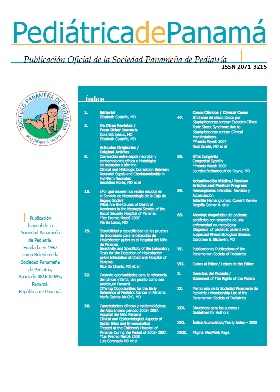About other Journals and Publications - Telephone consultation and prescription in Pediatrics: Factors that contribute and impact on clinical results
Downloads
Authors
DOI:
https://doi.org/10.37980/im.journal.rspp.20201587Keywords:
telephone, mobile, consultation, prescription, pediatricsAbstract
Introduction
The ownership and daily use of cell phones are increasing around the world. Telemedicine is gaining the support of healthcare professionals for recommending simple sanitary measures for more complex management decisions. Despite this, in Lebanon, concerned authorities have advised physicians to avoid any medical activity over the phone, as the safety of these practices is still not well established, especially among vulnerable pediatric patients.
Objectives
The objective of this study was to evaluate telephone consultation practices and drug prescription profiles in pediatrics and highlight their possible uses, contributing factors, and effects on clinical outcomes.
Methodology
A cross-sectional study was conducted nationwide for 5 months. Data on telephone consultations and prescription behaviors were collected through a self-administered questionnaire. The target population consisted of pediatric-trained physicians with at least 1 year of experience. The factors that influenced the telephone prescriptions were evaluated by means of the bivariate analysis.
Results
120 physicians (75.0% men) were included, 64.2% were general pediatricians, 77.5% practiced in private clinics, and 27.5% with more than 20 years of work experience. All participants gave medical advice by telephone; 61.7% considered that they should be reimbursed for these activities and 29.2% of them received the same consultation again in 50% of their patients.
A total of 109 participants (90.8%) prescribed medications through a direct telephone consultation (80.7%), SMS (27.5%) or WhatsApp (61.5%). Antipyretics (97.2%) and antitussives (48.1%) were the most frequently prescribed medications. Corrective interventions by pharmacists were observed in 40.4% of prescriptions. Fever was the only symptom that was statistically associated with phone prescriptions.
The results showed that non-prescribers were those doctors with more than 20 years of experience compared to prescribers (63.6> 23.9%, p to 0.02). Furthermore, it seems that prescribers were more likely to state that telephone consultations should be reimbursed (65.1> 27.3%, p 0.021) and were less aware of the prohibition of telephone prescription (59.6 <100%, pa 0.007).
Conclusions
Consultations and prescriptions via mobile phones are extremely frequent in pediatric practices, even when restricted by responsible authorities. Our results highlight the frequency of prescription errors and the need for corrective interventions by pharmacists. The current practice of telemedicine may not guarantee patient safety, but rather exists as a convenience. Adequate oversight with a regulatory framework and input from all stakeholders, including pediatricians and pharmacists, is necessary.
Reference
Haddad R, Sakr C, Khabbaz L, Azouri H, Eid B. Front. Pediatr., 15 January 2020. https://doi.org/10.3389/fped.2019.00515
License
Copyright (c) 2020 Infomedic InternationalDerechos autoriales y de reproducibilidad. La Revista Pediátrica de Panamá es un ente académico, sin fines de lucro, que forma parte de la Sociedad Panameña de Pediatría. Sus publicaciones son de tipo gratuito, para uso individual y académico. El autor, al publicar en la Revista otorga sus derechos permanente para que su contenido sea editado por la Sociedad y distribuido Infomedic International bajo la Licencia de uso de distribución. Las polítcas de distribución dependerán del tipo de envío seleccionado por el autor.







